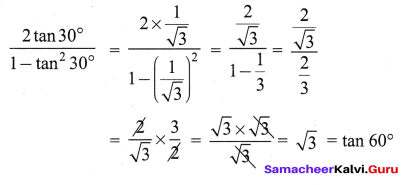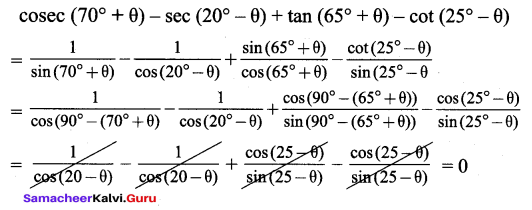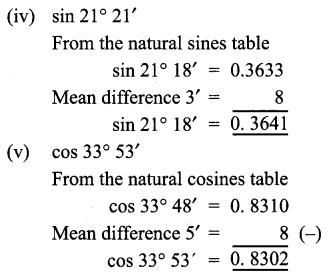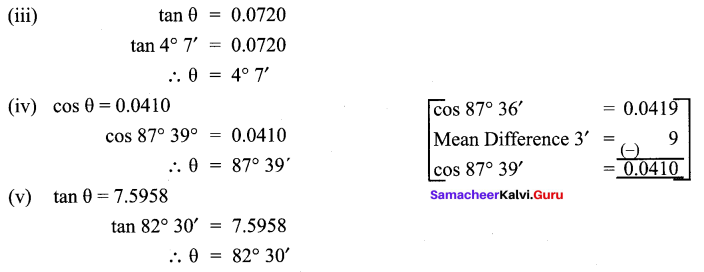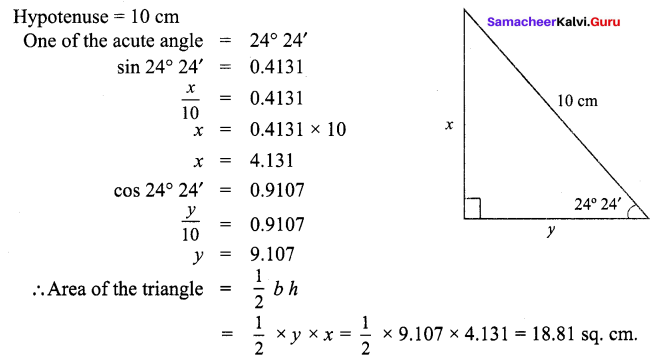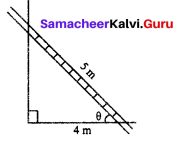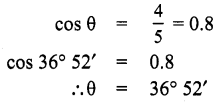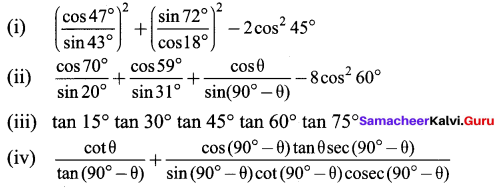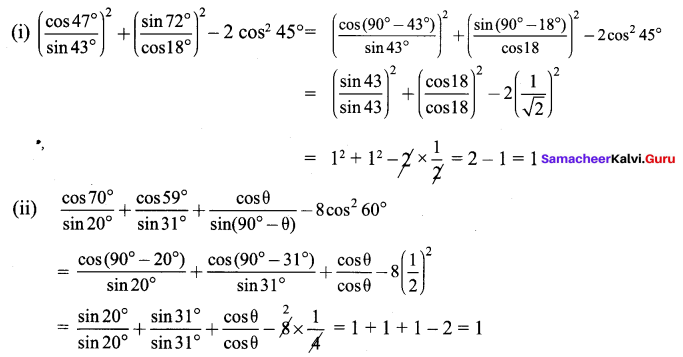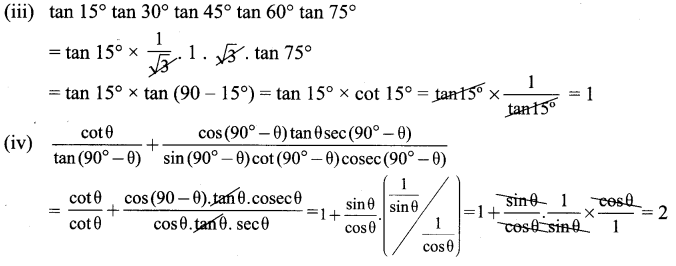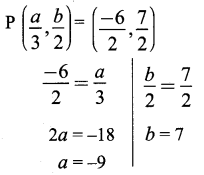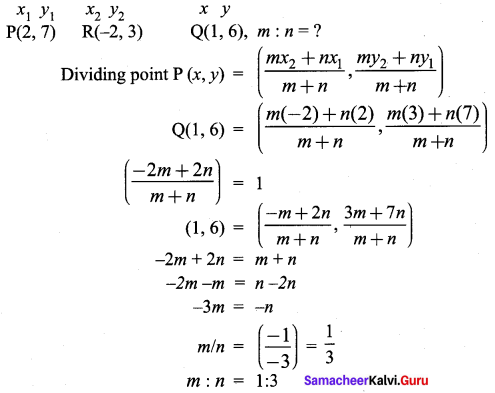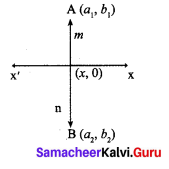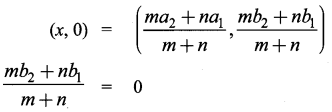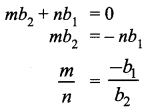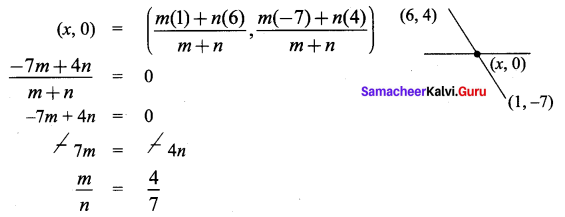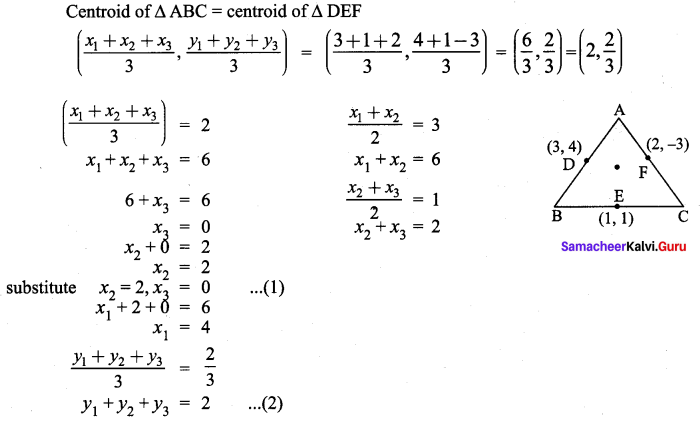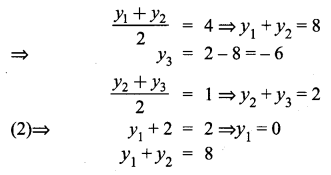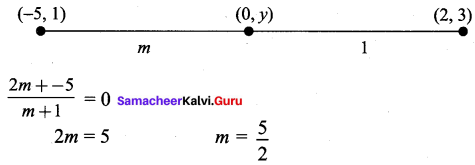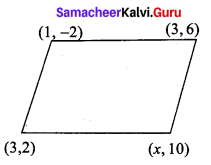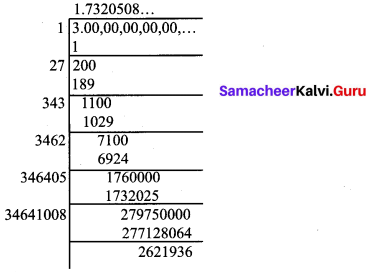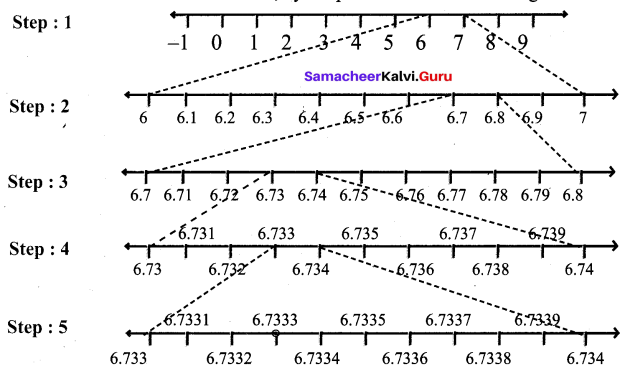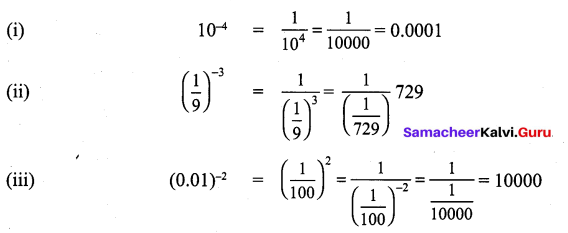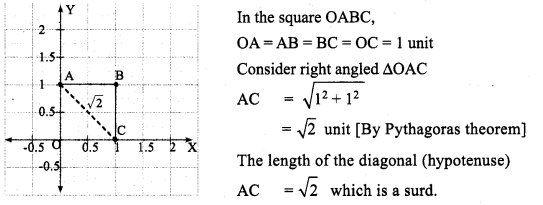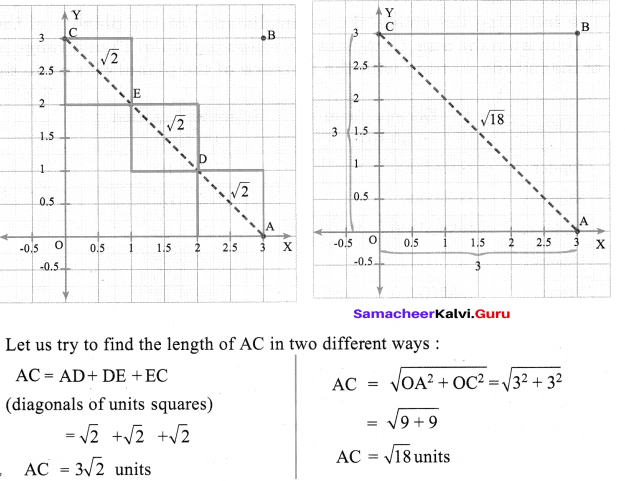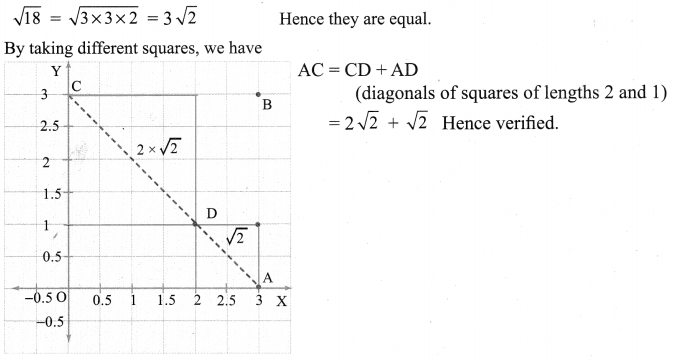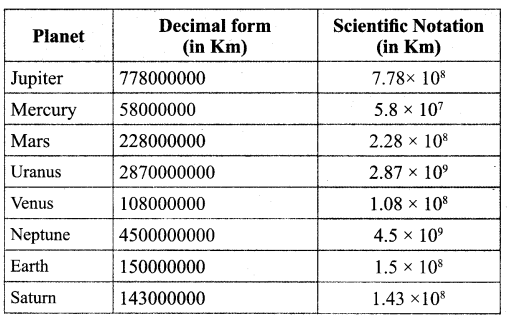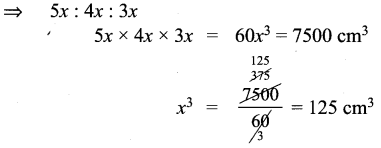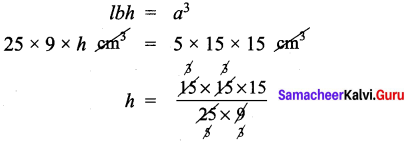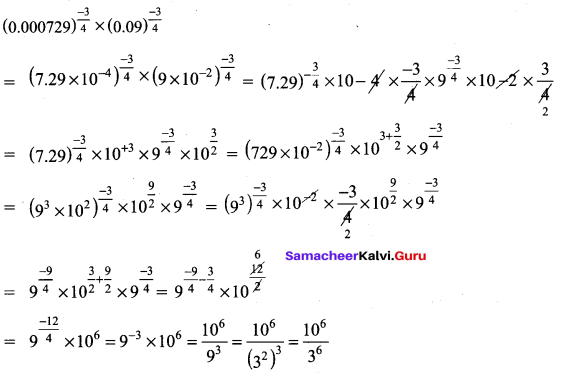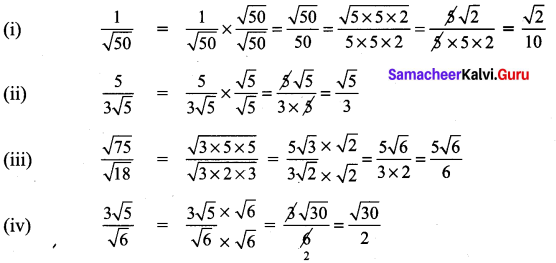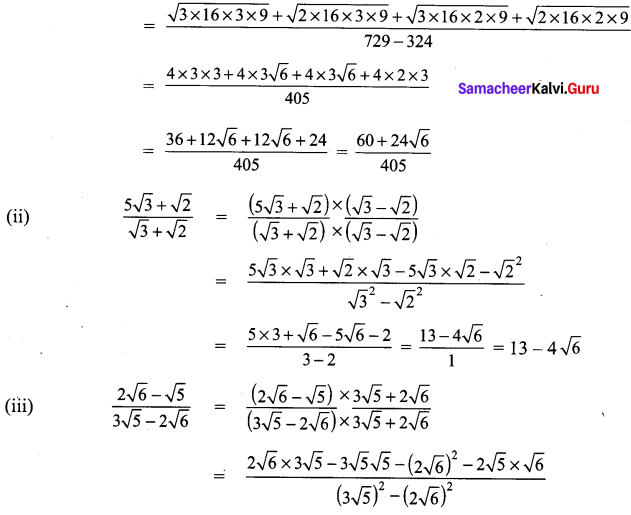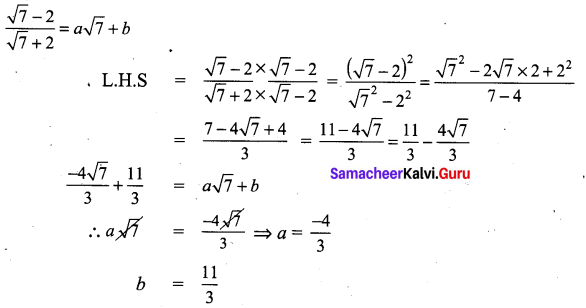You can Download Samacheer Kalvi 9th Maths Book Solutions Guide Pdf, Tamilnadu State Board help you to revise the complete Syllabus and score more marks in your examinations.
Tamilnadu Samacheer Kalvi 9th Maths Solutions Chapter 6 Trigonometry Additional Questions
Exercise 6.1
Question 1.
Find the six trigonometric ratios of the angle 6 using the diagram
Solution:

Question 2.
If 3 cot θ = 1, then find the value of \(\frac{3 \cos \theta-4 \sin \theta}{5 \sin \theta+4 \cos \theta}\)
Solution:
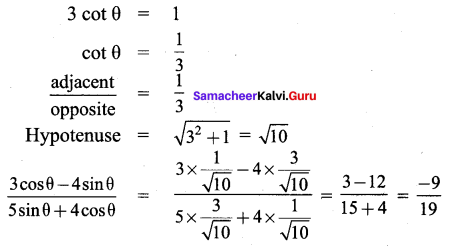
![]()
Question 3.

Solution:

Hence proved
Question 4.
If 3 (tan θ) + 4 (sec θ × sin θ) = 24. Then find all the trigonometric ratios of the angle θ.
Solution:
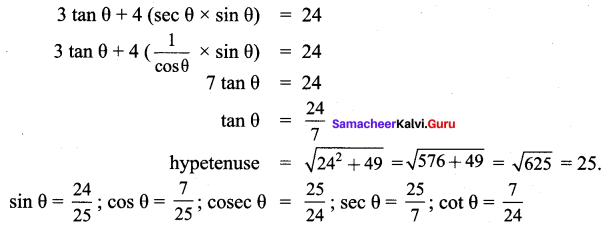
Question 5.
From the given figure, find all the trigonometric ratios of angle θ.
Solution:

Exercise 6.2
Question 1.
Find the value of sin 3x. sin 6x. sin 9x when x = 10°
Solution:

Question 2.
Find the value of cot 15°. cot 30°. cot 45°. cot 60°. cot 75°
Solution:
cot (90° – 75) cot (90° – 60°) cot 45° cot 60° cot 75°
= tan 75° tan 60° (1) cot 60° cot 75° = 1
Exercise 6.3
![]()
Question 3.
Find the value of cos 19° 59′ + tan 12° 12′ + sin 49° 20′.
Solution:
cos 19° 59′ + tan 12° 12′ + sin 49° 20′ = 0
Question 4.
Given that sin α = \(\frac{1}{\sqrt{2}}\) and tan β = \(\sqrt{3}\) . Find the value of α + β.
Solution:

Question 5.
Find the value of \(\frac{\cos 63^{\circ} 20^{\prime}}{\sin 26^{\circ} 40^{\prime}}\)
Solution:

![]()


